Crew 48 – Assigned 754th Squadron – October 1943

Shot down March 6, 1944 – MACR 3348
| Rank | Name | Serial # | Crew Position | Date | Status | Comments |
|---|---|---|---|---|---|---|
| 2Lt | Thayer Hopkins | 0738395 | Pilot | 06-Mar-44 | EVD | E&E Report 1966 |
| 2Lt | Ernest R Rundell | 0811443 | Co-pilot | 03-Jun-44 | RFS | Suspnd fr aerial flights 6 months |
| 2Lt | Samuel W Roberts, Jr | 0810504 | Navigator | 06-Mar-44 | EVD | E&E Report 1967 |
| F/O | Robert Cleveland | T1547 | Bombardier | 06-Mar-44 | EVD | E&E Report 1596 |
| Sgt | James W Peterson | 15071021 | Radio Operator | 06-Mar-44 | POW | Stalag Luft III |
| S/Sgt | Earle L Knight | 34099306 | Flight Engineer | 06-Mar-44 | POW | Wounded / Stalag Luft IV |
| S/Sgt | Daniel W Hayes | 17091784 | Top Turret | Aug-44 | CT | Awards - Distinguished Flying Cross |
| Sgt | James W Hobson | 16150359 | Ball Turret | 06-Mar-44 | POW | Stalag Luft IV |
| Sgt | Harold P Lambousy | 18171365 | Waist Gunner | 06-Mar-44 | POW | Stalag Luft IV |
| Sgt | Eric J Hilditch | 32488990 | Tail Turret | 06-Mar-44 | EVD | E&E Report 2114 |
At some point between training and flying the group’s first combat mission on March 2, 1944, Ernest Rundell was replaced by 2Lt Ernest T. Herndon, co-pilot on Crew 40. Rundell was removed from flying status (RFS) for unknown reasons on June 3, 1944. Sgt Daniel Hayes was replaced by Sgt Bewel E. Warren (from Lt Robert W. Davis’ Crew #49) for the March 6, 1944 mission. Hayes is listed in the 458th Group records on April 1, 1944, placing him on flying status. He is also photographed with Crew 41 with whom he flew the remainder of his missions. Herndon and Warren were captured and both were confined at Stalag Luft III.
Hopkins Liberator was hit by flak, which knocked out engines #3 and #4. Engine #3 could not be feathered. Flak also evidently hit fuel lines to the other two engines as #1 and #2 ran out of gas over the Zuider Zee. The bail out order was given and all ten men safely parachuted to the ground. Lt Herndon, Co-pilot, broke his ankle on landing and Sgt Knight suffered a broken leg when he hit the ground. Both of these men and four others were captured by the Germans. Lieutenants Hopkins, Roberts, and Cleveland, and Sgt Hilditch successfully evaded capture with the help of the Dutch Underground. All four were hidden until liberated by the Allies on September 6, 1944.
Sam Roberts – Navigator
“March 6, 1944 was the first American raid on Berlin. For some unknown reason, the lead plane missed the first drop and made a second pass over the target. By this time the Germans had out correct altitude and as we were leaving the target area, a burst of flak went off beneath our starboard wing. Number 4 engine quit and was feathered quickly. As we flew on towards Horsham St. Faith, number 3 coughed and died, but would not feather. Now we had to crab onward on two engines and full LEFT rudder! Both number 1 and number 2 were running with throttles to the firewall. The exhaust manifolds were white hot! Finally the last two engines quit and it was time to leave! Leave we did – all ten reached the ground safely, but two men broke ankles or legs and were picked up by the Germans. Four of us were contacted by the Dutch underground. They were Hopkins, Roberts, Cleveland and Hilditch. We were finally picked up by the 3rd Armored Division [prior] to the Battle of the Bulge.”
————————-
MACR 3348
No Statement
Missions
| Date | Target | 458th Msn | Pilot Msn | Serial | RCL | Sqdn | A/C Msn | A/C Name | Comments |
|---|---|---|---|---|---|---|---|---|---|
| 03-Mar-44 | BERLIN | 2 | 1 | 42-52450 | -- | Z5 | 1 | UNKNOWN 032 | |
| 05-Mar-44 | BORDEAUX/MERIGNAC | 3 | 2 | 41-29299 | M | Z5 | 1 | ROLL CALL | |
| 06-Mar-44 | BERLIN/ERKNER | 4 | 3 | 41-29299 | M | Z5 | 2 | ROLL CALL | CRASH HOLLAND |
Crew 48 Load List – March 6, 1944
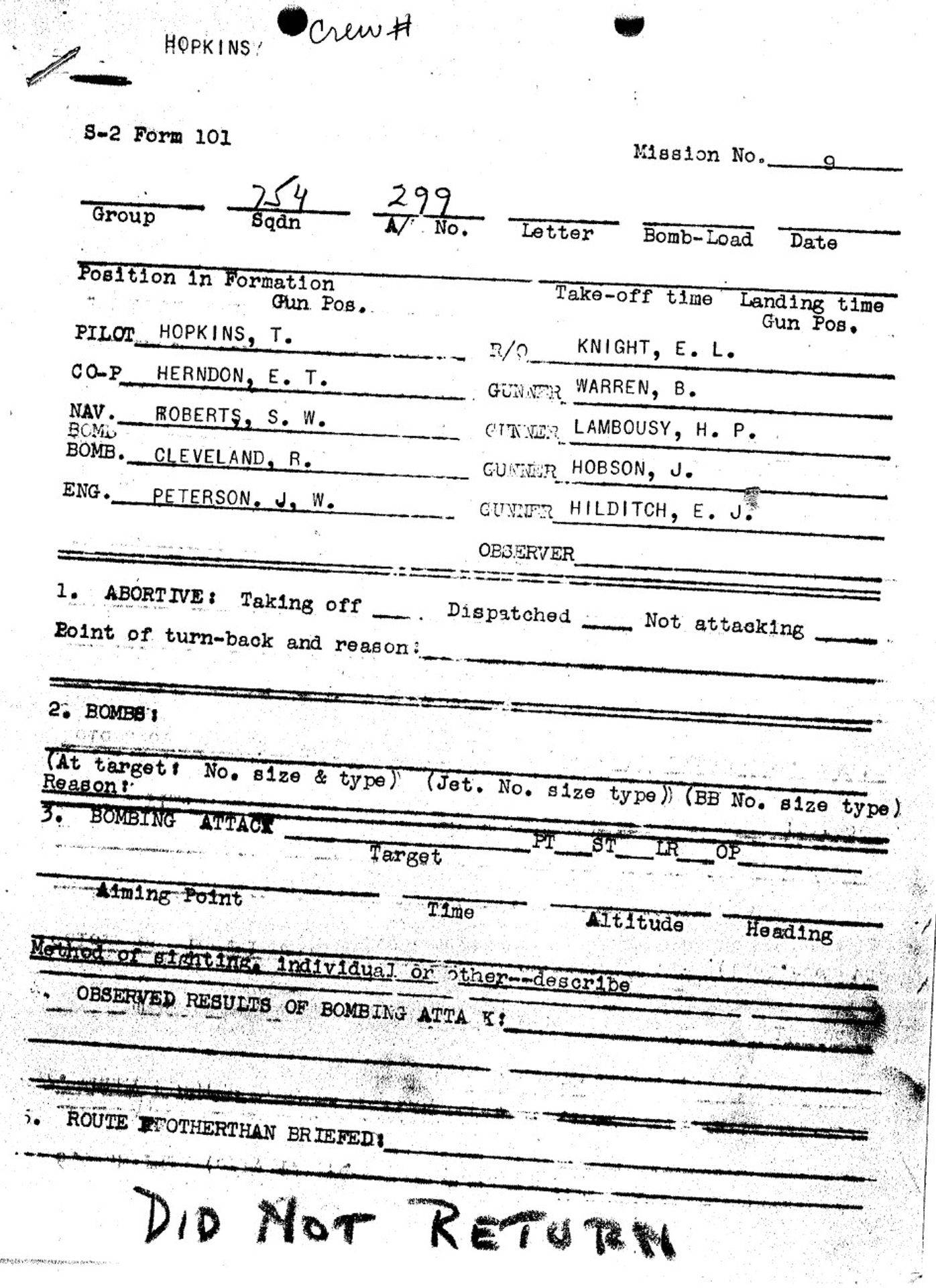
Information provided by Jaap Vermeer
Aircraft crashed in the province of GELDERLAND, near the municipality of NIJKERK. Time of crash: 15.25 hours
According to a letter from Thayer Hopkins, dated 25 May 1945, he and three of his crewmembers managed to evade capture and to get behind enemy lines to rejoin own troops. Thayer Hopkins on 6 September 1944, south of Luik/Belgium.
Ernest Thompson Herndon came down by parachute near Bunschoten and broke his ankles. Captured by German Feldgendarmerie. Taken to Bunschoten. Questioned. Taken to hospital by the Germans, at Amersfoort. Transferred to “Wilhelmina Gasthuis” Amsterdam on 10 March 1944.
Earle LaBruce Knight was wounded and captured. Taken to “Wilhelmina Gasthuis” at Amsterdam for medical treatment. Mentioned rank and serial-number on 11 April 1944.
Samuel Roberts, hidden at Amersfoort, Bakel, Deurne, Zwarte Plak (America), Venray (Veulen Nuth). The Belgian Fernand Demoulin took him in a van from Maastricht to Liege (Belgium). Liberated at 6.9.1944 south of Liege/B. (In company of Thayer Hopkins). Hidden on 29 different addresses until he was liberated.
Robert Cleveland, hidden at Amersfoort, Bakel, Sevenum, Zwarte Plak, Deurne, Venray-Velen. Via Stramproy, Molenbeersel crossed Belgium border. Liberated on 6.9.1944 near Liege.
Eric Hilditch, hidden at Amersfoort, Bakel, Sevenum, Zwarte Plak, Deurne, Venray-Velen. Via Stramproy, Molenbeersel crossed Belgium border. Liberated on 6.9.1944 near Liege.
Escape & Evasion Reports – September 1944
The following was copied from typewritten E&E Reports. In the case of F/O Robert Cleveland, his hand-written report was all that was available, and was extremely difficult to read. Michael M. LeBlanc very kindly lent his help and additional comments on other escapees and helpers. Photos were made for the fliers by the Dutch Underground and appear here courtesy Jaap Vermeer.
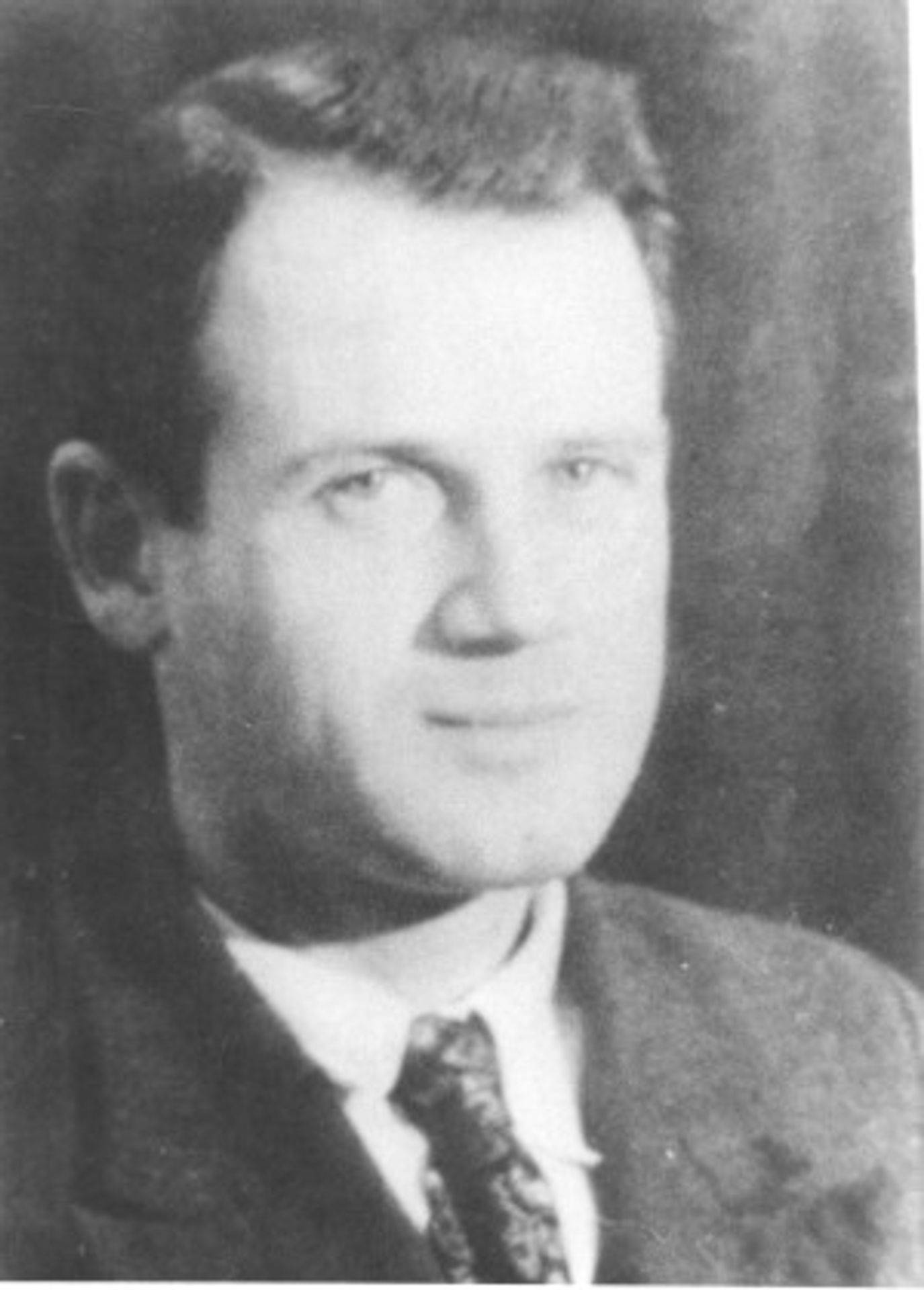
2Lt Thayer Hopkins – Pilot
Escape & Evasion Report #1966
I spent one night and day with M and Mme Pellicaan, Nijkirk, I then went to two or three other places and then met Lt. Robertson, [Roberts] my navigator in Ammersfoort, Holland. He has been with me ever since. I stayed 10 days with M and Mme C. Ottens, Amersfoort, Holland. He is ranking police officer. The Ottens were of all possible help to us and had already aided several other flyers. Moved by train to Deurne and by car to Bakel, Holland.
I stayed 10 days with a very kind couple – name not known. Two to three weeks at another place – name unknown. Farmer at that time was hiding 21 flyers among whom were Alex Walmsley, RAF; Eddie Taylor, 2Lt USAAF; Gus Fleischbein, 2Lt USAAF. From there we moved to Deurne, Holland and stayed two weeks with Jan Lamar and his wife. M and Mme Lamar were extremely kind and helpful and from there we went to Nuth, Holland. Stayed two weeks with M. Leunissen, and then six weeks with M and Mme P. Jh.H. Pinckaers, 49 Stationstraat, Nuth. Both the Pinckaers and Leunissens were extremely kind and Pinckaers had already helped other flyers. We next moved across the border into Belgium in a truck with a false compartment.
Stayed two days in Liege, and next moved to Val St. Lambert and stayed one week with M and Mme Theo Foidart. They were very kind. Next moved to Plainevaux, Belgium and stayed with M and Mme Michael Jasselette. They were extremely kind and helpful. We were over run by U.S. Forces on the 7 Sep 44 and moved on with them immediately.
Organizations
1. In Amersfoort – Excellent organization – Raided German food trucks and rations stamp offices. Very helpful to us and very efficient.
2. In Deurne – chaotic organization
3. In and about Nuth (Holland) Excellent organization. Stole supplies from Germans and were very helpful to me.
4. Liege – Took our money. Said it was orders from British. Were more interested in stealing supplies from Germans than anything else.
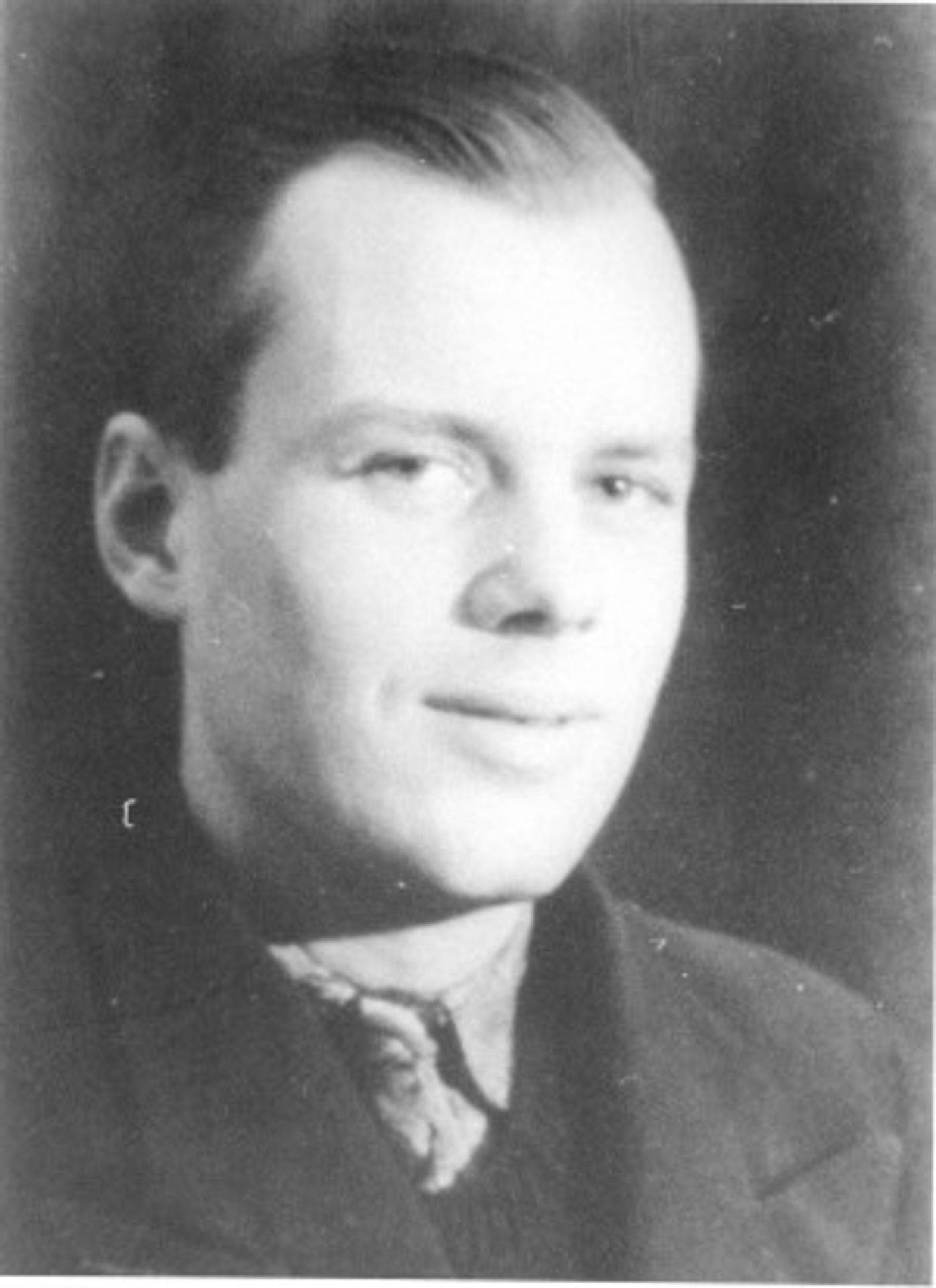
2Lt Samuel Roberts – Navigator
Escape & Evasion Report #1967
I came down near Nijkirk, Holland, 6 Mar, 1530 hrs. Met five others of crew and decided to split up in groups of two. Went with bombardier and hid in irrigation ditch until dark. After dark went to a farm house. Were fed and slept there. Picked up by organization next day and moved to Amersfoort, two days later. Met Lt Hopkins here and have been with him ever since. For rest of report see Lt Hopkins sheet No. 170.
Sheet marked “Secret – American” & “Most Secret – British”
Extensive trenches built along Holland-German frontier. In Holland the town of Nijmegen was bombed by a single Allied plane during daylight (railroad station). The people were very anxious to know if it were a purposeful raid or mistaken for a German town. The date was in early March of February. Morale in Holland was very good (civilians). Retreat of Germans observed – very poor equipment, morale was very poor.
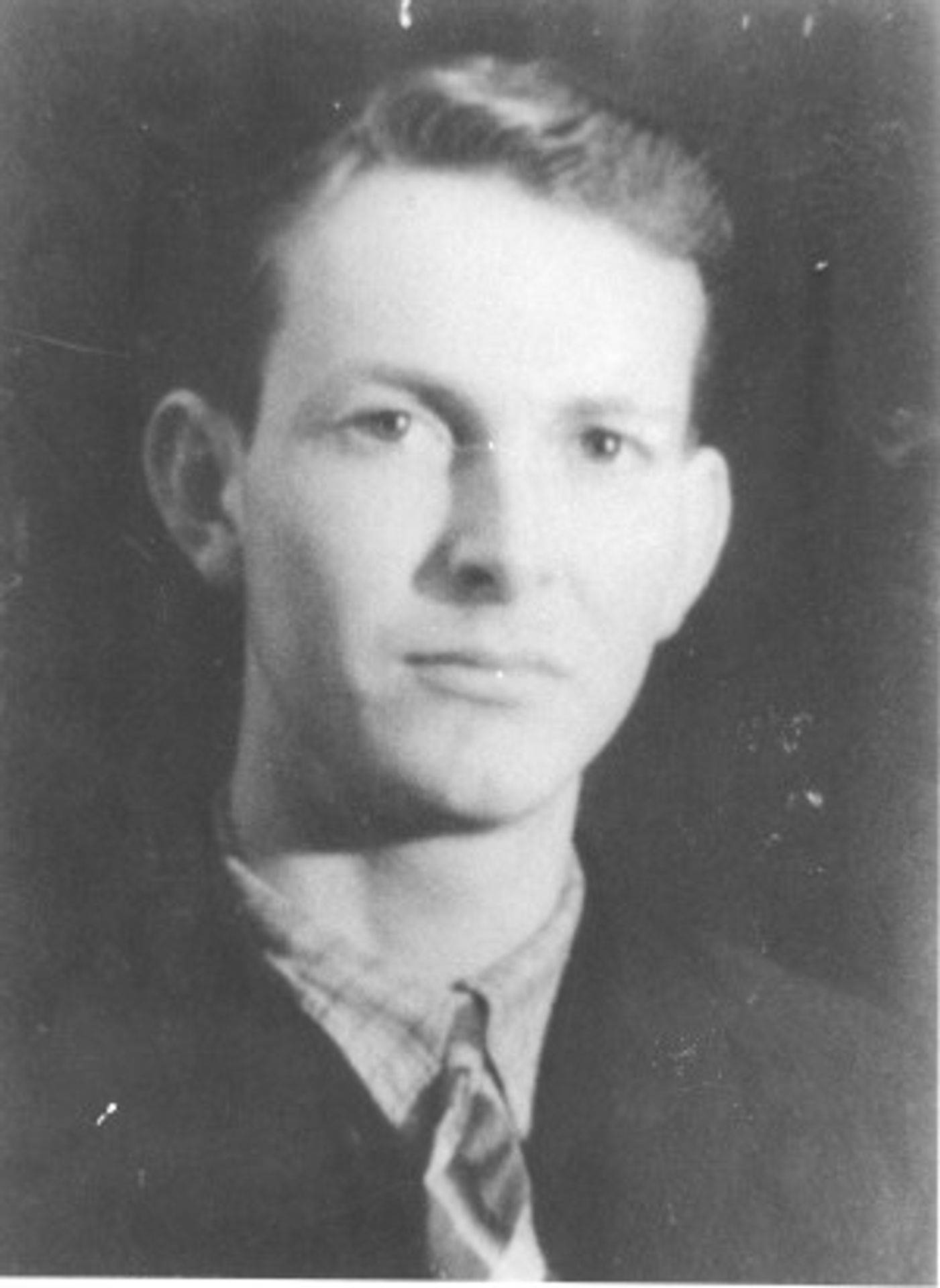
F/O Robert Cleveland – Bombardier
Escape & Evasion Report #1596
Flak over Berlin knocked out #4. Lost formation. #3 went out and would not feather. Gas leaked from both. Three P-47’s formed escort but over Zuider Zee not enough gas. Turned back as other two engines out. Bail out order 6-7000 feet. Was in stocking feet when order came, changing shoes – put them under arm and got them down okay.
I landed near Baarn, Holland on 6 Mar about 25 feet from Sgt James Peterson of my crew. Lt Roberts (E&E Report #1967), Sgt Warren, Sgt Hobson, and Sgt Lambousy had all landed within a block of us. Cars drove up. Someone said cars were German, so just rolled chute and threw in water and Peterson left his, but people kept [Germans] away. I set off with Lt Roberts and we hid until sunset wearing our green flying suits. We went to a farmhouse, told our story, were given warm milk and allowed to sleep in the hay loft. The next day a man came and told us he had transportation to Barcelona. We went to another farmhouse where we were given civilian clothes and at the end of four hours the head of the Amersfoort organization came with questionnaires.
We were joined by Sgt Hilditch (E&E Rpt #2114), and that night were all driven to chief’s home in Amersfoort. Two days later, Lt Hopkins (E&E Rpt #1966) joined us. We stayed there three weeks. The chief’s name was Gehalius Ottens and he is in police force. He took our pictures and got us our ID cards.
We then went to Deventer where we spent two days with an English-looking architect. Then, after a three-hour stop in Eindhoven, we went on to Deurne. Here we met Jose, a smuggler who promised us much, but never did more than continually ask for our name, rank, and serial number so that he could send a radio message. He took us to stay with a young man in the Balkel fire department. We were here three weeks. [“Don Jose” the nom de guerre of Cose Peerbooms, was an agent of the SD! He infiltrated the Bert Poels group in Horst Amerika in March or so of 1944. I have a description of him as follows: Had a beautiful athletic appearance. Small moustache. Spoke French, German, and English fluently. Pretended Prince Berrnard had sent him to Holland as an IS agent. He always carried a weapon with him. Wore tight fitting suit of black leather, and drove a heavy motorcycle. Later drove a convertible. Said to have been ex-Portugese Air Force, but was really just a plain Dutchman. Told many tall stories. The group finally uncovered him, gave him a quick trial, then executed him (with one or two others) and buried him in a now forgotten grave. I didn’t know how much damage he may have caused. — Michael Le Blanc]
Jose now moved us to a cave at Amerika. We were here two weeks. Jose had twenty-one aviators hidden here, some of whom were Lt August J “Gus” Fleischbein [390BG B-17 “Dina Might” shot down 10 Feb 44 – arrested 2 July 44 in Namur], Lt Edward Taylor (E&E Report #2017), Sgt Edgar Taylor (E&E Report 2138), and Sgt Tom Geary. All twenty-one of us were then moved [to] Jacques, Jose’s henchman at Venray. After two weeks here we moved on to farmers at Deurne for another two weeks. On this farm we met Squadron Leader Jack Loub and three of his officers. He had been shot down on his last mission. We were all thoroughly fed up with Jose. He finally took four over the border on bicycles and “Vin” [Noer van de Vin of Zonnehove in Neeritter] a short man with a moustache took six by train to Maastricht, amongst them Hopkins and Roberts. Six more were to follow, but Jacques had a friend connected with a Belgian line and we wanted to leave Jose.
A truck took us to underground’s shack in the woods near German border. Five of us were here three days. The truck driver, a member of the Armee Blanche came from Brussels and gave us Belgian ID cards. We next went to Grubbenvorst for three days and lived with a wood worker (first week in June). From here we could see Germany. A car took us to Sevenum where we lived in chicken houses. We met a Dutch Army captain who thought he could send us out on a line intended for Frenchmen escaping from Germany. During the three weeks we were here he took our pictures.
We cycled to Grootbedlar near Roermond and stayed in a chateau there. The chateau had belonged to a Professor Dubois, now deceased and his elderly daughter lived there. Lt Leo Williams, Sgt Hilditch, Sgt Eddie Taylor, and Sgt Tom Geary were all here. Lt Charles A. “Jack” Haupt, a navigator was here with J. W. Firth and Mansell Williams, both English RAF. A few days later P/O Richard Garrity, RCAF [Navigator, 431 Squadron] joined us. We were here two days and during this time our pictures came from Sevenum. The young schoolmaster here worked hard for us.
At midnight on 4 July with Heins and an undergrounder as guides, we crossed the border 20 kilometers south of Grootbedlar. There was a full moon, and as we walked through the woods we were shot at by the Belgian police, but no one was hit and after hiding an hour we joined the White Army. They took ten of us to a place in the woods 8 kilometers from Mossaic. We were [here] about ten days. 150 Russians were supposed to be hiding nearby. Richard Garrity was our spokesman and a member of the White Army told him that five of us could take the train to France. Our old ID cards were collected and we were given new ones which used the Sevenum photos. We went to a house nearby and caught a train. Two of us were following a man and the other three [followed] two girls in the White Army.
Garrity, Firth, Leo, Mansell Williams and myself arrived in Liege and went to a restaurant. The first time it was closed so we walked around Liege for four hours. We returned and went upstairs where we met a short, blond woman named Marie. She had been tortured by the Germans who had put an iron mask on her face and taken out the teeth on one side of her mouth. She told us we were going to France to meet a British intelligence officer [from] the Ardennes. She took us by train through Mamur at the border near Givet. She was doing this on her own initiative because the Maquis at Grivet, which was to give us papers, had been caught and the line was therefore broken at the border.
We crossed the border in broad daylight by just following the road on past a stone marker. We stopped at the first café and met a man from the Belgian Army and Elaine, 5 foot 5 brunette. Then we went on to a little town for three days. Marie had no contacts; she just stopped a milkman and asked him for help. As they were talking, a Maquisard appeared who warned him that he would be shot if he did not stop selling milk to the Germans. Marie left two men with the milkman and the other three of us with a French family. All these people were afraid of the Germans and felt that it would be better that we be prisoners of war than that they be shot for keeping us. When Marie returned three days later, she was still without contacts and we went back to Belgium.
This time we followed a railroad track across the border, and although a German was standing here, he said nothing. Marie soon ran into a Maquis who claimed to have a line to Switzerland. She left the five of us with him and went back to Maaseik to collect the remaining five. The Maquisard took us to Elaine. We slept in the woods, in the open under her care for a week. The Swiss line was no good. Elaine contacted Ernest of Agrimont and he let us sleep in his barn for three or four days. A White Army man came to us one day in the woods for a talk. Then Elaine returned and sent Garrity and Firth off on a new line. We were to follow them.
A day later Elaine took us to meet the White Army man who had already talked to us in the woods. He led us further into the woods and turned us over to another man. He took us to a small town to another man named Ernest with whom Leo Williams stayed. Here we met Vic, local chief of the White Army. He took one of our dog tags and Mansell Williams and I went on to Flavion where we joined Firth and Garrity. I went on to another house where I joined Lt Robert Grace [E&E # 1599 353FG]. He had already been here two months. I stayed a month until American troops arrived. While I was here Angele Hubot, rue de Perry [Paris?] Flavion was wonderful to us. From here on my story is the same as Lt Grace’s.

Sgt. Eric J. Hilditch – Tail Turret Gunner
Escape & Evasion Report # 2114
Target was Berlin. Particle cloud cover. Flak heavy, bombed center of city, altitude 20,000 feet. Hit by flak about one hour from target, lost No. 4 engine, then No. 3 due to hit in cross feed lines. Lost all fuel near North Sea. Turned back to Dutch coast and bailed out. Fighters down low did not attack us. Three P-47s escorted us to coast of Holland after distress signals were fired. Lt. Herndon broke ankle on landing in chute and was captured. Sgt. Knight broke hip and cut lower lip nearly off in landing. I gave him first aid then was chased by the Germans and got away. Peterson, Hobson, Lambousy, and Warren were taken prisoners. I hid out for six hours in swamp until darkness, then contacted four houses until I found help. They finally contacted organization. Kept in Amersfoort for four weeks then was moved to Deurne in Holland by train, an hour’s drive to at least 25 other places in Holland and then finally to Belgium. While crossing border we were chased and shot at by Germans. Finally made Liege in Belgium. Hopkins, Roberts, and Cleveland left with other organization in May 44. Last saw them in Deurne.
Evadees and Helpers

Standing: RAF pilot Erazam “Eric” Wardzinski (2nd From left), Samuel Roberts (5th from left), Eric Hilditch (7th from Left)
Kneeling: Thayer Hopkins (5th from left)

Eric Hilditch, (2nd from right) with unknown evadees and helpers
(Photos: Jaap Vermeer)
B-24H-10-CF 41-29299 Z5 M Roll Call
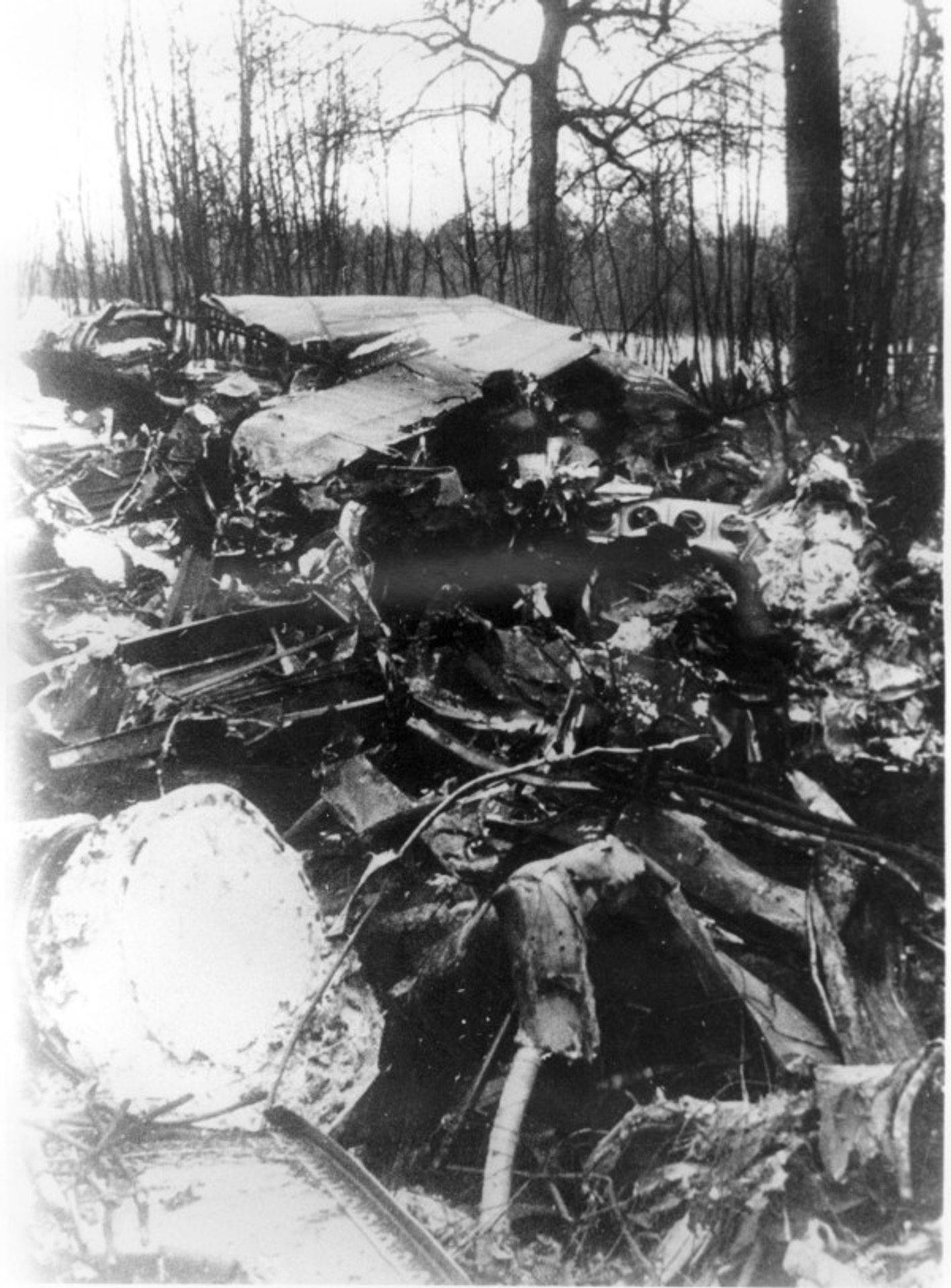
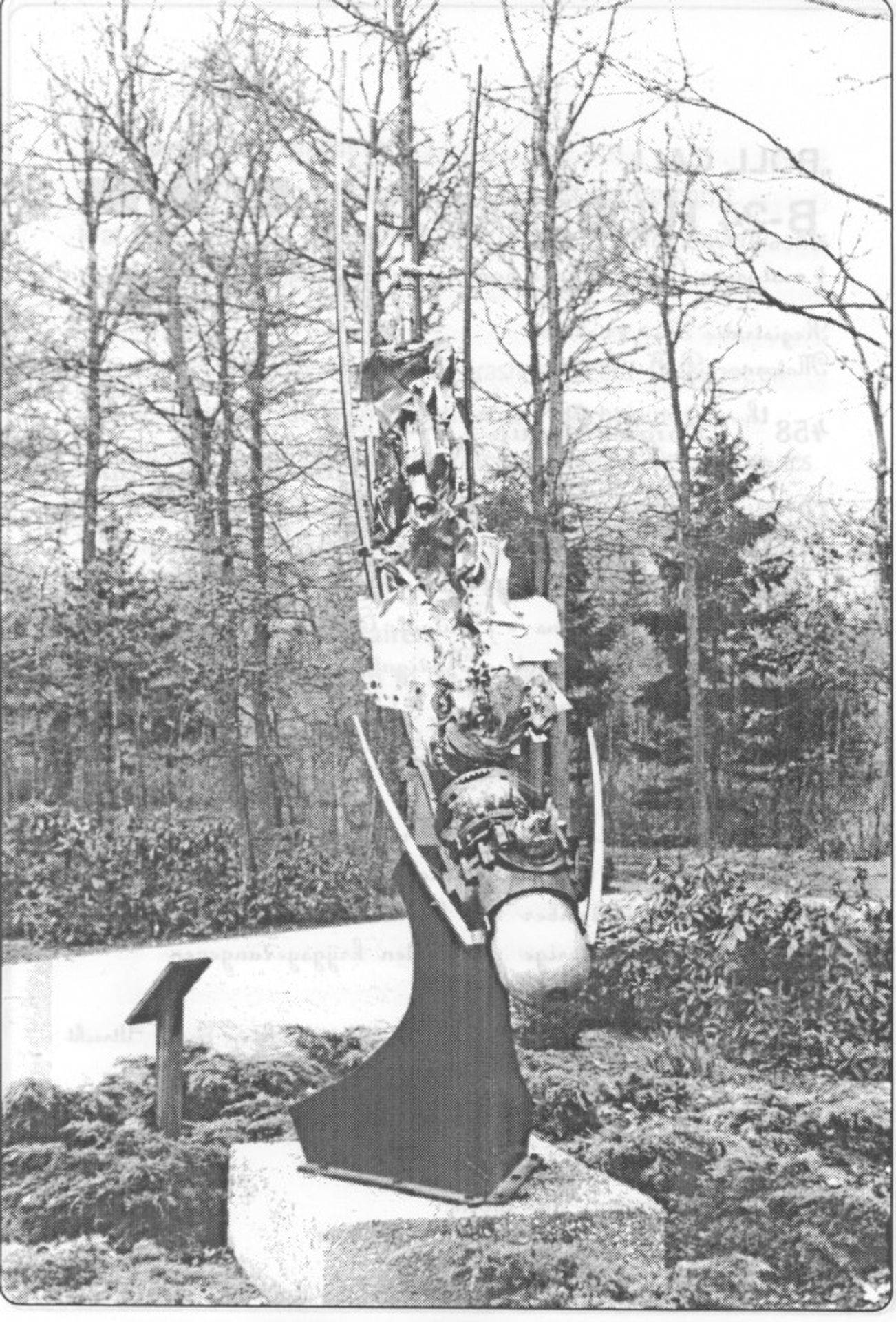
Wreckage of Hopkins’ Liberator and the memorial created after the war.
(Photos: Jaap Vermeer)
